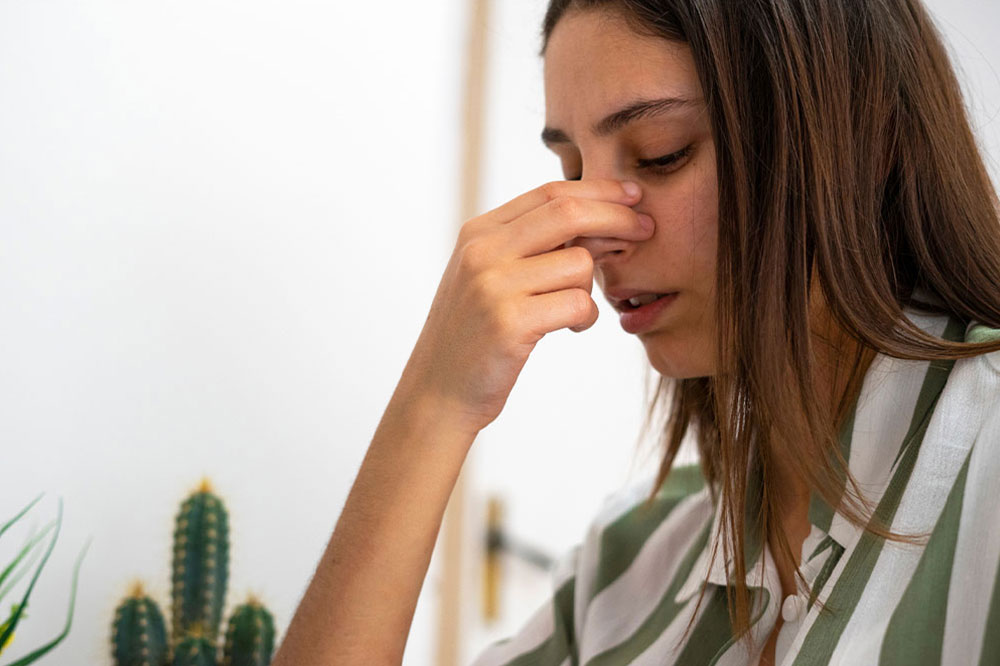
Post nasal drip – Symptoms, causes, and management
When unusually excess mucus forms and drips down the back of your throat, it is known as a postnasal drip. This could occur if your body makes more of this secretion than necessary or cannot eliminate it as soon as usual. The mucus from the nose runs down to the throat and causes congestion and wet coughs. Despite being healthy, postnasal drip can result in throat itching or a tickling sensation, frequent throat clearing, and hoarseness.
Signs and symptoms
The tonsils and other throat tissues may enlarge, causing an uncomfortable condition. It’s also possible to lump in the throat. Other signs and symptoms of postnasal drip include:
- Feeling like mucus is getting into your throat
- Swallowing frequently
- Sounding hoarse or gurgling
- Feeling the need to swallow
- Halitosis, or bad breath
- Persistent Coughing that is worse at night
- Nausea and vomiting triggered by extra mucus draining to your stomach
- If mucus blocks the eustachian tubes, it can cause painful ear infections
Causes
Postnasal drip can occur due to several reasons. Allergies are one of the most common causes of allergic postnasal drip. It can also result from a crooked septum, the cartilage wall between the nostrils.
Additional root causes include:
- Flu
- Objects getting in the nose (most prevalent in children)
- Sinusitis, which is an infection or swelling of the sinuses
- Treatment taken for lowering blood pressure and birth control
- Weather changes, chilly temperatures, or dehydrated air
- Some foods (such as spicy foods, which can cause mucus flow)
- chemicals, fragrances, household cleaners, smoke, or other irritants
Treatment options
Your doctor might suggest specific treatment options to combat postnasal drip from a bacterial illness. You should avoid substances to which you are allergic to treat the condition caused by allergies.
- Antihistamines are a way to treat the symptoms
- Decongestants
- Nasal sprays
- Saline irrigations for the nose, such as neti pots
If a deviated septum is the reason for the postnasal drip, then getting a septoplasty will help treat the condition permanently. The cartilage wall is straightened during this surgery, which improves airflow.
Home remedies
Postnasal drip has long been treated with a variety of natural home remedies.
- Hot chicken soup is most likely the well-known and favored at-home treatment. Hot soup or any other hot drink could provide momentary comfort and respite, but it won’t cure you. It works by clearing your throat and stuffy nose with the hot liquid’s vapor. Mucus gets thinned by it.
- Elevate your head to allow gravity to clear your nasal passages of mucus. When reading or watching television, avoid reclining down. Keep your head slightly up at night. You can do this by stacking two pillows or placing one against your headboard. But be careful not to raise your head too high, which can hurt your neck and shoulders.
- To assist thin mucus production, stay well-hydrated. Water is the best option to achieve that, so drink enough of it. Additionally, a warm beverage like tea, broth, or warm water with a half teaspoon of honey may assist in relaxing your throat. Stay away from things like caffeine that tend to dehydrate people.
- While sleeping at night, use a cold mist humidifier and a vaporizer or diffuser with essential oils like eucalyptus or peppermint.




